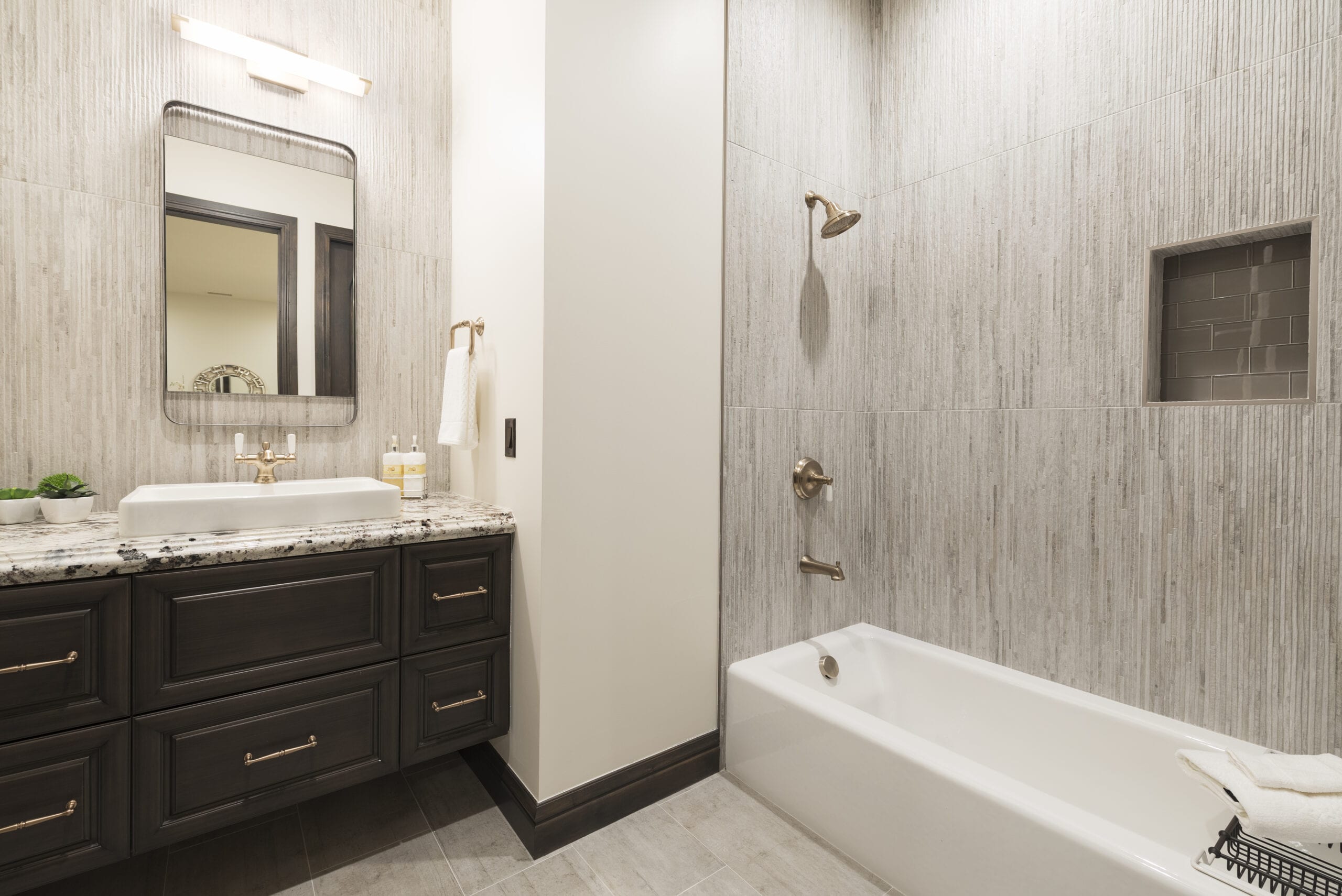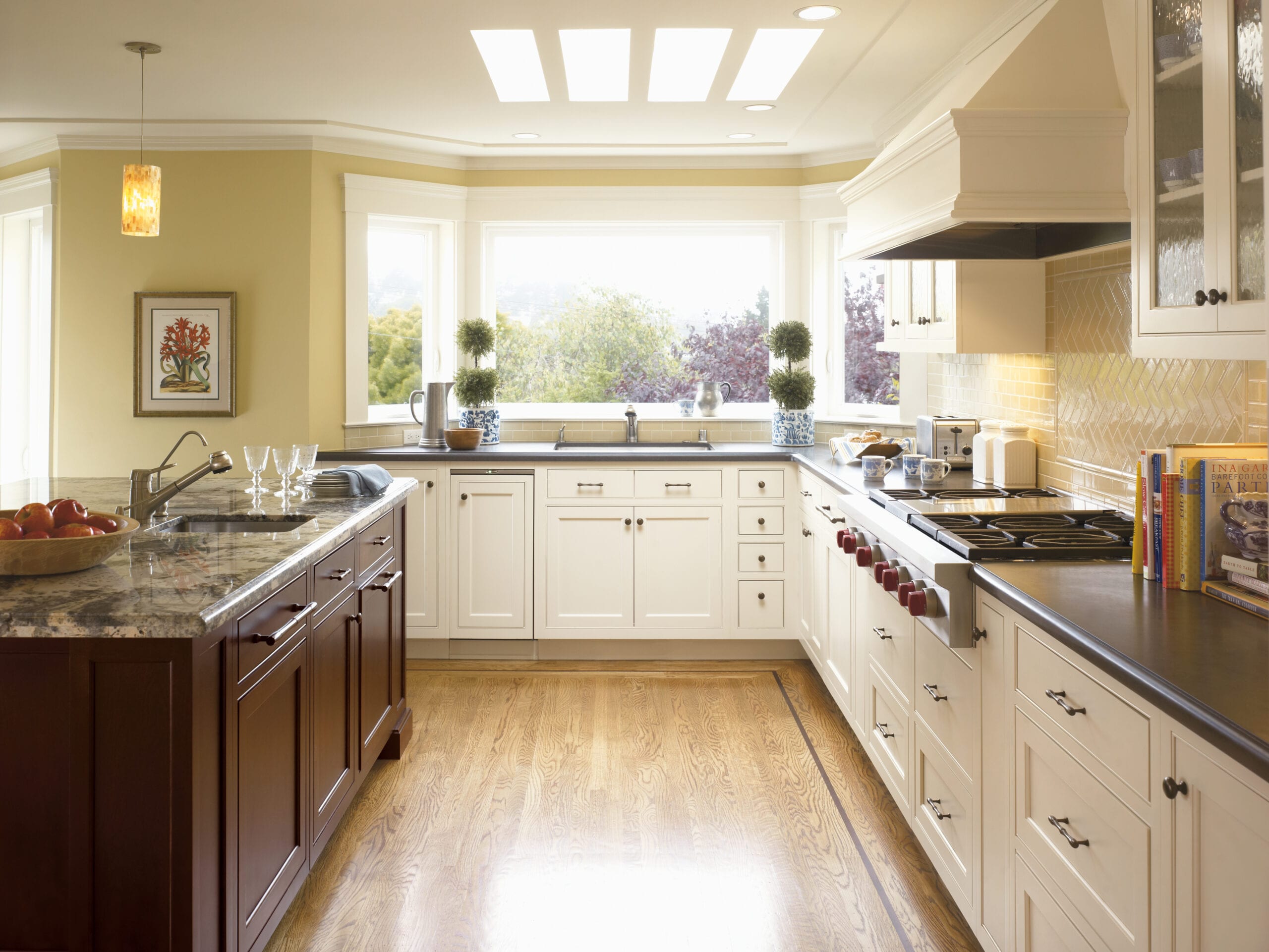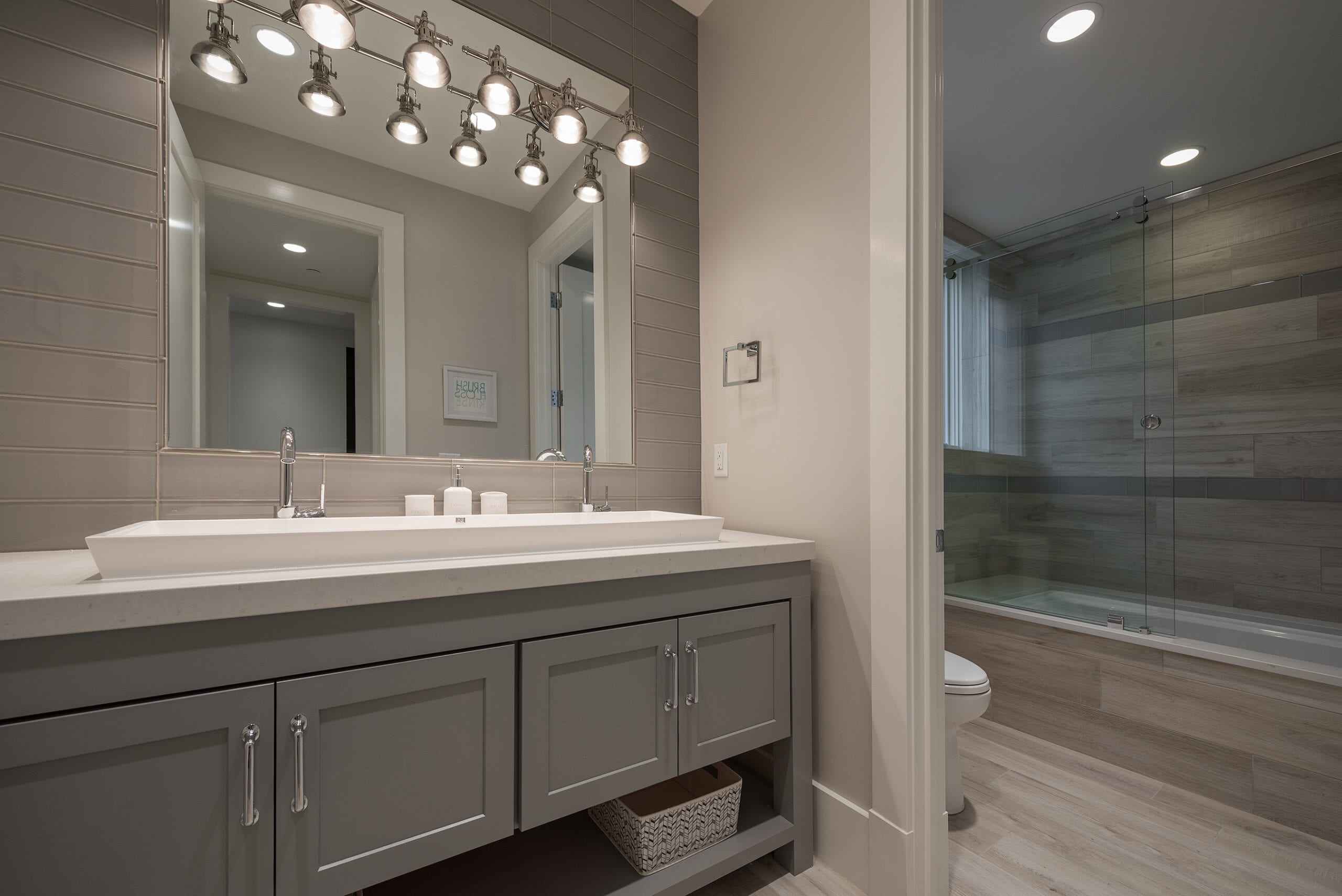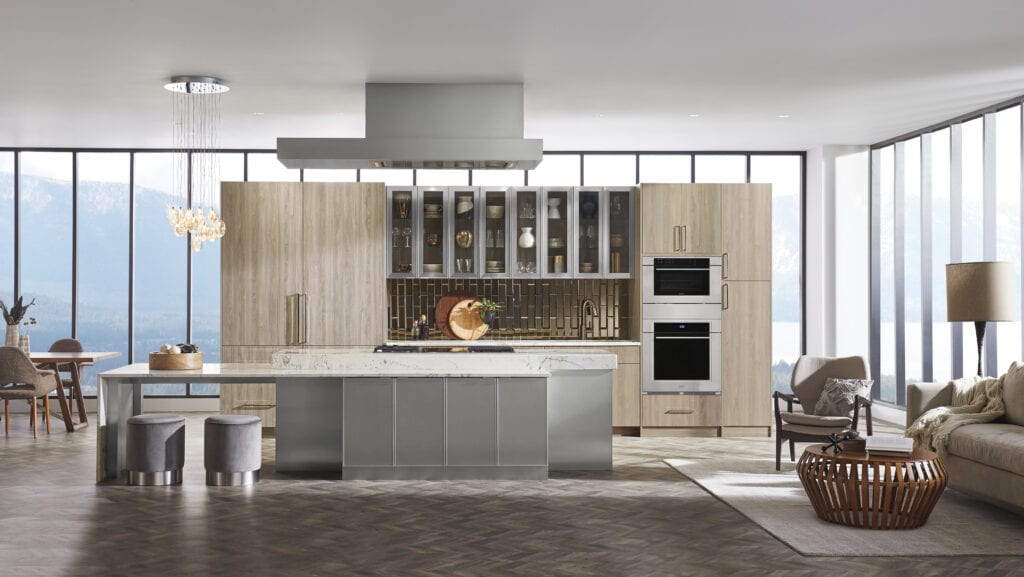Choosing finishes that match can be one of the most satisfying and yet frustrating parts of a kitchen or bathroom renovation project.
There is a multitude of materials, colors and styles of flooring, countertops and cabinets available to today’s homeowners. And while it’s wonderful to have so many options, how do you know what will ultimately look great together in your home?
First, take a deep breath. Then, realize that selecting coordinated finishes to achieve your ideal home design doesn’t have to be a stressful experience. Our seasoned team of design professionals has been helping homeowners make finish decisions on their remodeling projects for many years. Below are a few of their tips for taking the stress out of this process and ending up with results you’ll love.

1. Begin by choosing your countertops.
Your project will go much more smoothly if you start by selecting your counters first. Why? There are many more color and pattern variables in countertops than in flooring or cabinetry, so choosing this element first will be much less limiting later.
The top three countertop materials – quartz, granite and marble – each have unique hues and striations that are beautiful but can be difficult to match exactly with a fixed cabinet or flooring choice. Also, your countertop is typically front and center and therefore the most visible element when people enter the room – it makes sense to choose this element first since it will get a lot of attention.
Take it from the experts: you’ll have an easier time matching your cabinets and flooring to your countertops than vice versa.
2. Select a simple color scheme.
Color is your friend, but too many different colors in a room design can appear chaotic rather than coordinated.
For a more put-together look, choose two main shades that complement each other and one accent for a pop of color. For example, combining white cabinets and flooring with a black countertop is both classic and modern. Add a shot of red in the form of a backsplash, seating or light fixtures and you’ve created a coordinated design that still looks distinctive.
You also can’t go wrong if you stick with neutrals, which are perennially popular. Grey has become the newest, freshest color for home décor, and it mixes well with other neutral tones. Think pale grey cabinets with a white countertop and walnut-toned hardwood or vinyl plank flooring. Brighter accents like fuchsia, blue and sunny yellow look fabulous with grey as well.
Whichever colors you choose, make sure you like them well enough to live with them for several years – because you will.

3. Consider texture.
Texture in home design comes from the materials used within a room and can help you match the components of a kitchen or bathroom when renovating.
For example, sticking with wood or wood-like materials in cabinets, countertops and flooring works thematically by carrying similar textures throughout the room. Adding metal drawer or cabinet pulls that mimic metal appliances or accents is another way to achieve a cohesive look.
Texture also contributes depth and richness to a home design without having to rely too much on color. In fact, varying texture while staying within the same color scheme is a great way to match the elements of your remodel while adding visual interest to the room. For instance, grey wooden cabinets, a charcoal marble countertop, and stone-colored plank flooring play within one color family but still offer the eye some contrast. Add a pop of color in your accent pieces and you have an appealing, fresh room design.

4. Look for what “goes” instead of what matches exactly.
Just as you avoid “matchy-matchy” clothing ensembles, you should avoid room designs that are overly color coordinated. Some of the magic and character of a room comes from contrast – items that are complementary rather than identical in appearance.
That means opting for a bold cabinet choice and pairing it with neutral flooring and countertop colors or matching cabinet and flooring colors and letting your countertop stand out as your secondary shade.
No matter which colors you choose, they should enhance rather than fight with each other. Too much contrast is confusing to the eye, and too little contrast can be just a tad monotonous. Strike a comfortable balance for a look that’s interesting and inviting.
While selecting countertops, cabinets and flooring that match in a kitchen or bathroom remodel can seem daunting, it doesn’t have to be. By starting out with your countertop choice, opting for a simple color scheme, considering texture, and looking for what “goes” instead of what matches exactly, you can streamline your selection process and achieve a room remodel you’ll love for years.


